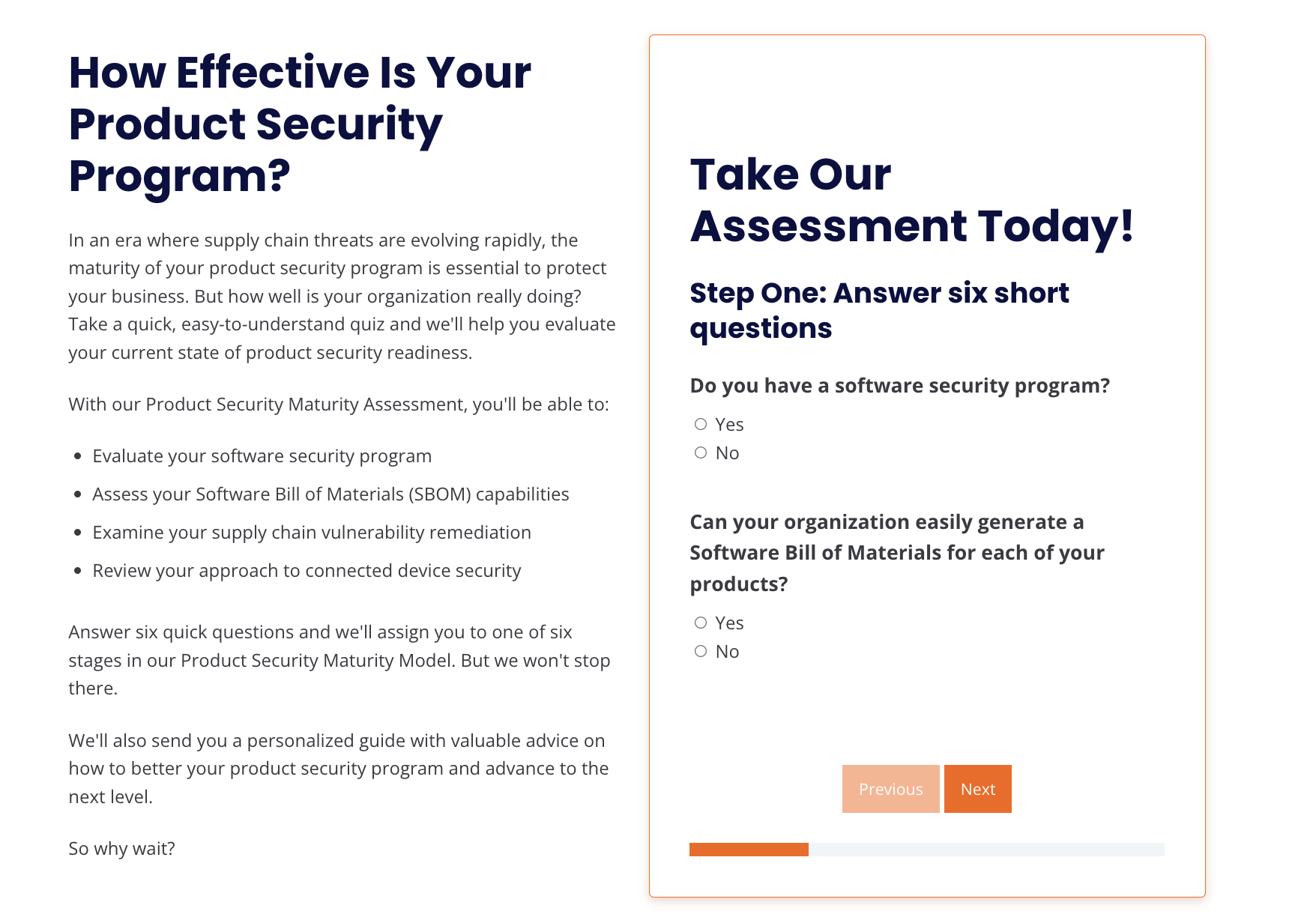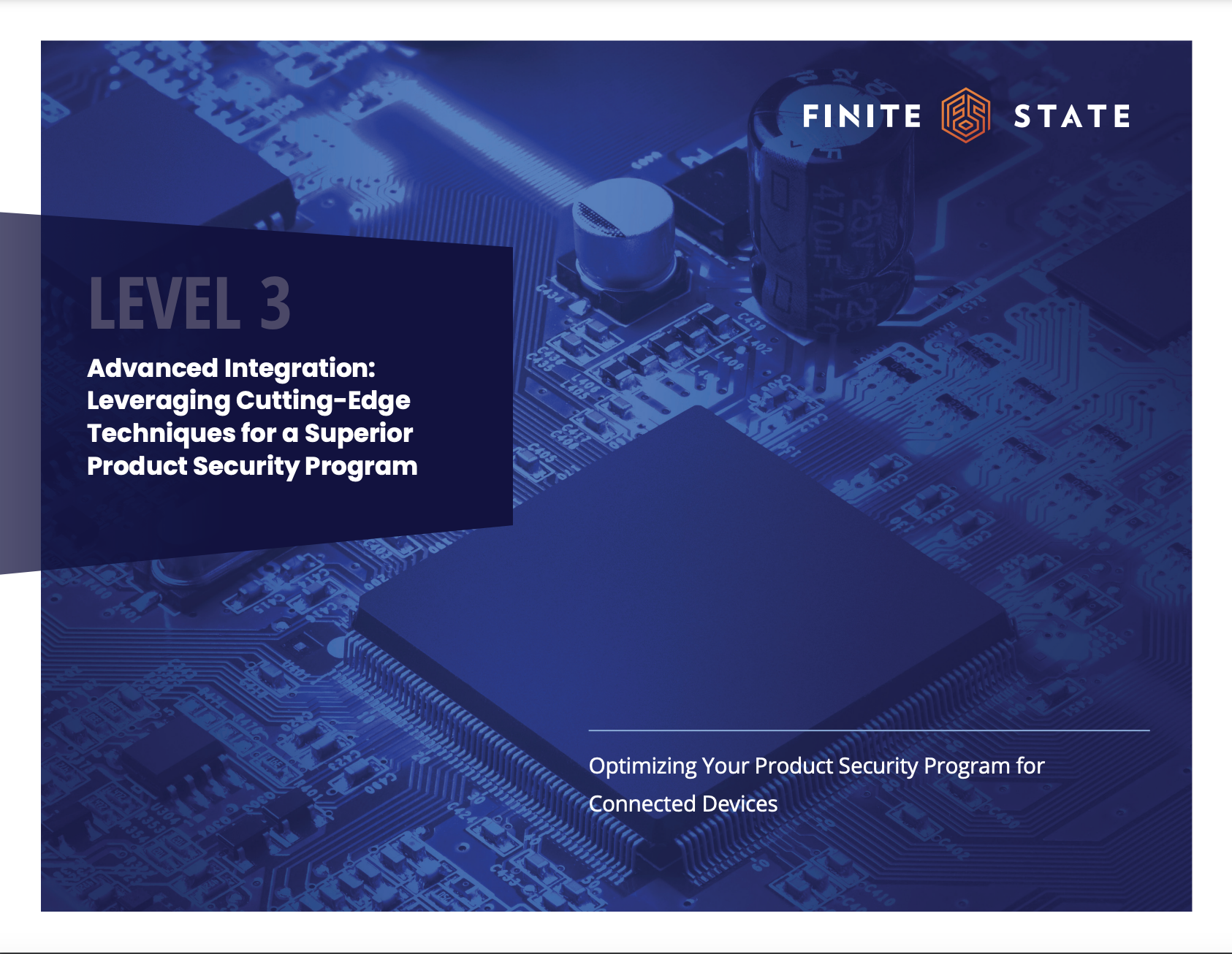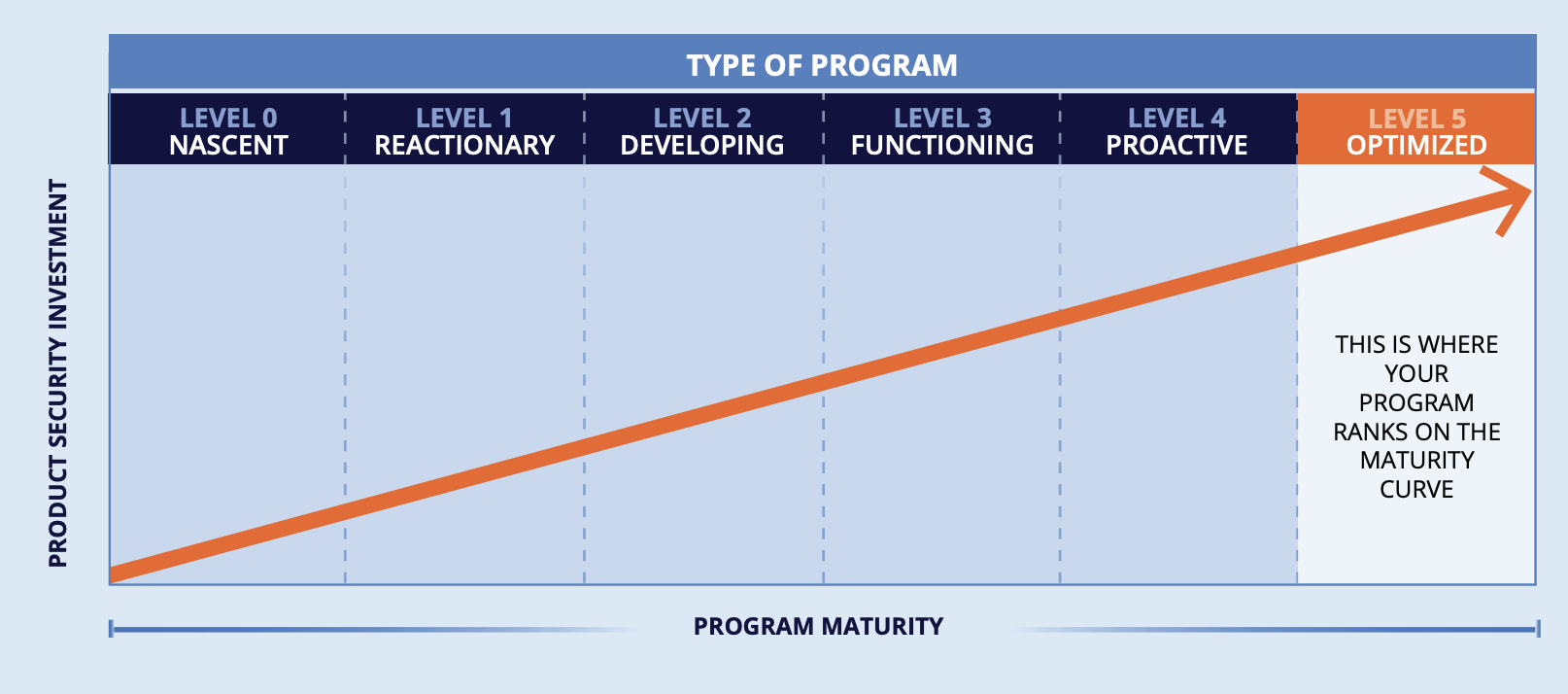Answer six questions about your product security program. We'll help you assess your product security posture and determine where you can improve.
How does your product security program rank? How mature is it compared to others in the industry?
Finite State's innovative web-based Product Security Maturity Model (PSMM) tool enables you to easily assess your current product security posture and identify areas for improvement. Read on to find out how:
Why Try the Product Security Maturity Model?
You're only six quick responses away from diving into how to improve your product security program. Here's why it's worth your time and effort:
- Clear Understanding: The PSMM provides a clear understanding of your current security maturity level, offering a starting point for improvement.
- Tailored Guidance: Upon completion, you receive a tailored guide based on your assigned level. This guide offers actionable steps and strategies to help you progress to the next level.
- Strategic Roadmap: The PSMM acts as a roadmap, guiding organizations through the journey of enhancing their product security, from basic to advanced practices.
- Compliance and Competitive Edge: Achieving higher maturity levels not only ensures compliance with industry standards but also provides a competitive edge in the market, as robust security is a key differentiator.
How Does the Finite State Product Security Maturity Model Work?
Straightforward and user-friendly, you answer six key questions that evaluate various aspects of your product security practices.

Based on the responses, our tool assigns you a product security maturity level, ranging from Level 0: Nascent to Level 5: Optimized. Each level reflects the sophistication and effectiveness of your current security measures.
We deliver your ranking after we receive your answer to our last question. Then, we send you our guide, with a detailed assessment customized for your current maturity level. The guide contains actionable steps you can take to improve your product security program.

Have questions? Want even more specialized advice? Just ask and a member of our team will reach out and answer your questions about the benefits of a strong product security program, the path you'll need to get there, and how our platform can be the differentiator you need in building, strengthening, and optimizing your program.
Understanding the Different Stages of Product Security Maturity
In addition to the benefits and workings of the Finite State Product Security Maturity Model (PSMM), it's important to also understand the different stages within the model. Each level represents a specific stage in your product security journey:
Level 0: Nascent
At the Nascent level, organizations are at the very beginning of their product security journey. There's a significant lack of structured security practices, and any measures in place are typically ad-hoc and reactive.
Organizations at this stage may not fully recognize the importance of product security or may lack the resources and knowledge to implement it effectively. Their approach to dealing with cyber threats is often unplanned and occurs only after a security incident has already taken place. This level highlights the need for foundational steps towards establishing a basic security framework.
Level 1: Reactionary
Organizations at the Reactionary level have taken the first steps in acknowledging the importance of product security. They have basic security measures in place, but their approach remains largely reactive.
Security protocols at this stage are typically triggered by specific incidents rather than being part of a proactive strategy. While these organizations may respond to threats as they arise, they lack a comprehensive plan for ongoing risk management and security optimization. This stage is characterized by a growing awareness of security needs but limited capability for forward-planning and threat anticipation.
Level 2: Developing
At the Developing stage, organizations are actively working to establish and standardize their product security practices. There is an evident effort to move beyond mere reactive measures, with the implementation of more consistent security policies and procedures. However, these systems are not yet fully mature or comprehensive.
The focus at this stage is on building a stronger security foundation, developing internal expertise, and integrating security more deeply into the product development lifecycle. Organizations in this phase are in a transitional state, improving but still refining their approach to product security.
Level 3: Functioning
Functioning organizations have established a structured and consistent approach to product security. They possess defined policies and practices that are regularly implemented. At this level, there is a clear understanding of the importance of security, and efforts are made to maintain a baseline of security standards.
However, while security measures are in place and functioning, there may still be gaps in advanced threat detection and response capabilities. These organizations are well on their way to maturity but may benefit from more sophisticated tools and strategies to further enhance their security posture.
Level 4: Proactive
Proactive organizations exhibit a forward-thinking approach to product security. These organizations not only have strong, established security practices but also engage in regular review and improvement of these practices. They anticipate potential security threats and implement measures to prevent them proactively.
With a more strategic and comprehensive approach to security, these organizations often employ advanced tools and methodologies, such as predictive analytics and continuous monitoring, to stay ahead of emerging threats and vulnerabilities.
Level 5: Optimized
Organizations at the Optimized level represent the pinnacle of product security maturity. Their security practices are not only well-established and comprehensive but are also continuously evolving and improving.
These organizations demonstrate a deep integration of security into all aspects of their business, backed by advanced technology and a culture that prioritizes security. They are characterized by their ability to swiftly adapt to new threats and changes in the cybersecurity landscape, ensuring enduring resilience and robust protection against a wide array of cyber risks.
Growing Through the Stages of the PSMM

Progressing from one stage of the PSMM to the next involves a strategic and conscious effort to improve security practices. As organizations move up the levels, they develop a more sophisticated and proactive approach to product security, ultimately leading to an optimized state where security is deeply embedded in their culture and operations.
By using the PSMM tool, organizations can pinpoint their current stage and receive tailored guidance on how to advance to the next level, making the journey towards optimal product security clearer and more achievable.
Ready to Try the PSMM?
In an era where cyber threats are evolving rapidly, we all need to work together to stay ahead in product security. The PSMM tool is more than just an assessment; it's a strategic partner in your cybersecurity journey. By understanding your current state and the steps needed to advance, your organization can effectively mitigate risks, ensure compliance, and build trust with customers.
Try the PSMM tool today and take the first step towards a more secure and resilient future. For more information or to use the tool, visit our website. Let’s secure your digital landscape, together.
Subscribe to Our Blog
Get the latest posts delivered straight to your inbox weekly.
Share this
You May Also Like
These Related Stories

Demystifying Product Security: Why It Matters

CI/CD, DevSecOps, and the Road to Security Maturity



